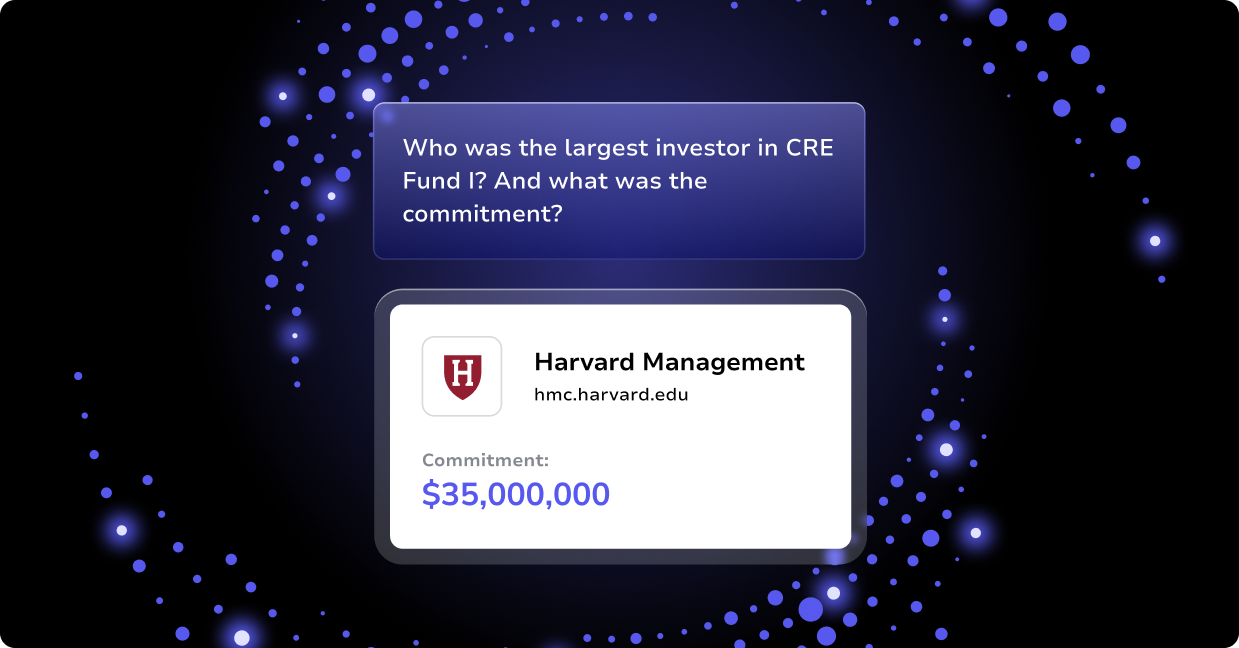Raising your first fund can be one of the biggest challenges you face as a firm. From building a backing of strong connections to empowering LPs with data-driven insights, no detail can be overlooked.
But, thanks to a recent guide released by TechCrunch, there are 15 steps the best firms follow when raising funds. We’ve summarized them here to help you tackle the challenge and lay the groundwork for a high-performing fundraise.
- Build Your Backing
The more backed you are, the more investable you are. Before you begin soliciting your fund to LPs, network, network, and then network some more. The more people on your side, the more feedback you gather, and the more awareness you gain. This helps ensure your fund will have an interested audience, along with a network that can help make valuable connections before you launch.
- Set Up a Data-Driven Deck…
Compile all of the information to support your pitch (a tool like Altvia can help by centralizing all alternative and traditional data across your industry and firm), and put together a strong marketing toolkit, complete with a data-backed pitch deck, website, and social media presence to prove your credibility.
- … a Data-Driven Digital Presence …
Make sure your entire team has a professional digital presence, including an up-to-date LinkedIn profile, and leverage their following and shareability to spread awareness of the metrics you want to share (ie: the size of exit, number of people you managed, budget, etc.).
- … and a Data-Driven Due Diligence Process
Set up a data-informed due diligence questionnaire for easy LP access, including details on return history, legal documents, a fund organization chart, portfolio construction model and one-pagers, and the resumes and case studies of key personnel and past investments.
- Provide Answers to FAQs
No matter how unique your fund is, chances are you’ll have some commonly asked questions from LPs.Prepare answers in advance, and compile your FAQs into a single document so you can arm LPs with responses to the questions they care about most from the start.
- Self-Evaluate
If your fund doesn’t stack up to the track record of successful first-time fundraises (industry-standard strategies that have landed investors before, experienced founders, target AUM of >$50 million), you may want to reconsider your strategy.
Be honest with yourself…can you really raise money from investors, or should you be focusing on family offices and/or high net worth individuals?
- Recruit Resources
If your budget permits, recruiting additional resources can help accelerate and better operationalize your fundraise. Whether you leverage a part-time hire or AI/tech, additional help can empower you to then refocus time and effort on other areas of the business, while ensuring every aspect of your fundraising efforts have the time and attention to detail needed to succeed.
- Aggressively Maintain Your CRM
The key to any successful private equity fundraise is organization and transparency within the firm. Arming every team member with access to your CRM, including transparency of interactions with potential investors in every stage of the pipeline, is critical to building and maintaining relationships.
- Tap into Your Network…
Remember how important we said it is to network in Step #1? Now that you’re at a more active stage of your fundraise and have your data-driven resources together, it’s time to tap into the network you’ve built to solidify your backing.
While you’ll likely receive a lot of “nos,” this is your chance to ask for feedback and referrals to grow your audience and reach new potential investors.
- … Including Your Digital Network
In-person meetings are great, but organizing 50+ of them can be time-consuming, and ineffective use of your time. Incorporate a few virtual events in your networking strategy to help you exceed your reach and gain exposure to new people and opportunities you may not have had access to otherwise.
- Secure Speaking Slots
Build up a database of investor-focused events, and contact organizers to secure speaking slots. Even if you’re just introducing a sponsor or keynote, you’ll be growing your presence among a captive audience, who could also be future investors.
- Control the Meeting Format
Once a meeting with an LP is secured, make sure the time is productive for both parties. Begin by asking the LP if they’d like to go through the deck page-by-page, or if they’d prefer to jump in with initial questions.
While discussing, pause regularly for questions and make sure the format is conversational; no one should speak for more than two minutes at a time without checking in for feedback or dialogue from the other party.
- Do Your Own Due Diligence
While the LP will be running their own checks, you should also know as much about the prospective LP as possible to help your firm tailor the pitch, and know what to expect before entering a partnership.
- Keep Your Legal Counsel on Standby
A lot of paperwork goes back and forth during onboarding, so make sure to have your legal counsel ready to review every document that comes your way before officially entering an agreement with an LP. - Keep Up with Quarterly Reporting
Finally, after your first close, quarterly reporting is mandatory. Within 45 days of the close of each quarter, provide detailed reports on key metrics for LPs to keep them in the loop (just be sure they are compliant with your Limited Partnership agreement).
From centralizing your data for decks and reports to integrating a powerful CRM to fuel conversations during every stage of your deal funnel, Altvia’s PE/VC-designed software can help ensure a smooth and seamless fundraise.
To learn how we can help your firm throughout every step of your first fundraise, start a conversation with our team.




